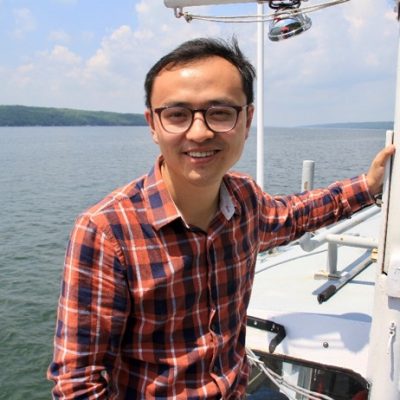Postdoc Spotlight: Lin Yao

September 19, 2019
Lin Yao is featured as part of Cornell’s Postdoc Appreciation Week 2019.
Lin Yao is from Xinhuang, China and earned his degrees from Shanghai Jiao Tong University in China. At Cornell, he conducts research in the field of electrical and computer engineering. He participated in the 2018-2019 NextGen Professors Program.
What is your area of emphasis? Why is this work important?
My research area mainly focuses on human machine interaction, especially brain computer interface (BCI). BCI establishes a novel communication and control channel between our brain and the external environment. For those who are paralyzed, or in a locked-in state, the BCI would be the only communication and control channel for them to communicate with outside world.
What inspired you to choose this field of study?
I am interested in biological intelligence and also artificial intelligence. My current field of study integrates both, with the ultimate goal for the benefit of humanity. Innovation in biomedical engineering will help people to live better lives.
How has your background influenced your scholarship?
I have an engineering background, and would like to solve problems, especially in the biomedical engineering field. My background helps me to discover interesting scientific problems and excites me to find solutions.
What hobbies or activities do you enjoy in your spare time?
I like playing basketball, fishing, and hiking.
Why did you choose Cornell?
Cornell is a very beautiful place and has a very good environment for research. Cornell is my third postdoc, my first one was at Goettingen University in Germany and the second one was at University of Waterloo in Canada. I like to work and discuss questions with students at Cornell.
What’s next for you?
I am looking for a faculty position in the U.S. or go back to China for a professor position in the university.
Do you have any advice for current graduate students?
Find the right question or problem for your research, it is very important to know the state-of-the-art research.
